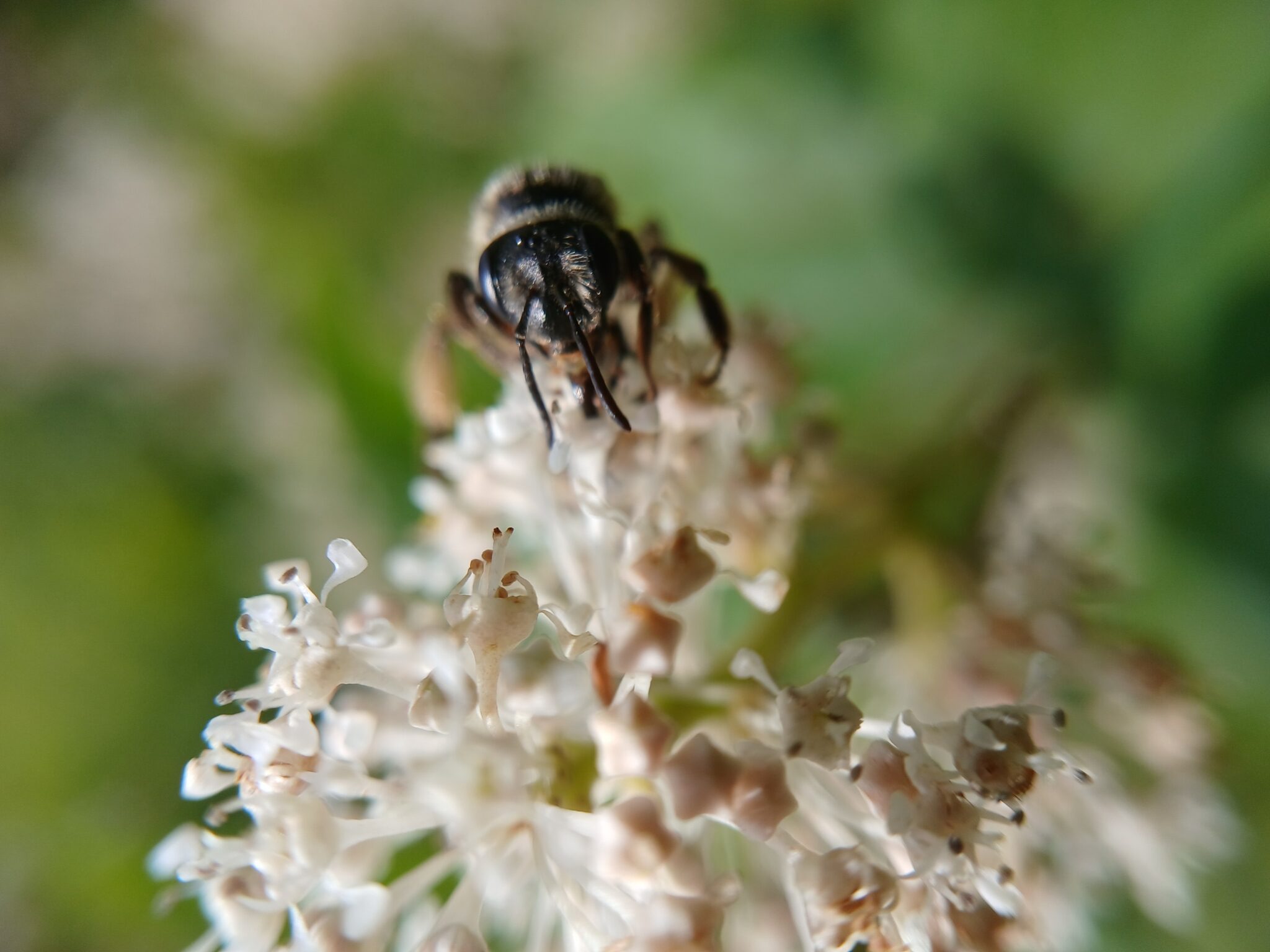
Hawthorn Mining Bee (Andrena crataegi) © David Mantack
Last month I reconnected with a colleague from years ago—a geologist—who mentioned that he uses iNaturalist in the university classes he teaches. “We contribute a lot of observations,” he said. “Who knows if they’re really of use to anyone?”
So let’s trace the journey of a single bee observation submitted to the platform. This observation was made in Vermont, so it was automatically added to the Vermont Atlas of Life (VAL) iNaturalist project, which captures all observations within the state’s boundaries.
The observer wasn’t sure what kind of bee it was, so she used the program’s suggestion that it was a “Mining Bee (genus Andrena)” and clicked “Submit.”
Though bees can be tricky to identify by nonexperts, about 60% of Vermont bee species are identifiable from clear photographs of live bees. VCE biologist Spencer Hardy regularly reviews bee observations in iNaturalist, and from the photo, he determined the specimen to be a Hawthorn Miner (Andrena crataegi). Another biologist confirmed, and the observation joined Spencer’s statewide database of some 24,270 research-grade bee observations on iNaturalist, amassed over several years.
VCE Data Scientist Mike Hallworth developed a method to combine this iNaturalist dataset with bee data from other sources into a single analysis. This doubled the dataset to more than 50,000 records, enabling Mike and Spencer to determine each species’ rarity in Vermont, model species distributions based on host plants and other habitat factors, identify Important Bee Areas around the state, apply climate change scenarios to the models to predict how geographic ranges might shift, and assign state conservation rankings.
VCE’s State of Vermont’s Wild Bees report documents these findings. Spencer’s peer-reviewed catalogue of 352 Wild Bees found in Vermont (up from 98 listed species from the last 1962 effort) will be published this fall in Northeastern Naturalist. It includes a supplement that summarizes all the available data records for each species, including this observation of the Hawthorn Miner.
From there, our bee observation left VCE global headquarters in White River Junction and traveled on. The bee dataset was shared to the Global Biodiversity Information Facility and on the VAL data portal, where it has so far been downloaded thousands of times and cited in dozens of scientific publications.
Several organizations joined forces with VCE and UVM’s Bee Lab to form the Vermont Pollinator Working Group, which set to work educating farmers about which bees are critical to which crops and how to protect them. The group’s crowning achievement was educating the Vermont Legislature on the effects of neonicotinoid pesticides on bees, setting the stage for passage of tight restrictions in 2024. The bill’s language cited VCE’s State of Vermont Bees report.
Word spread to other states about the State of Vermont Wild Bees project. Colleagues from Texas, Washington, University of California-Riverside, and the Xerces Society wrote a $1 million grant to replicate VCE’s methods at a national
scale and invited VCE to help make it happen! That project is now underway.
So, if you’ve ever wondered what happens when you snap a photo and upload it to iNat, here’s an example. As you can see, we maximize the conservation power of every contribution you make.
Thank you for making it all possible!
